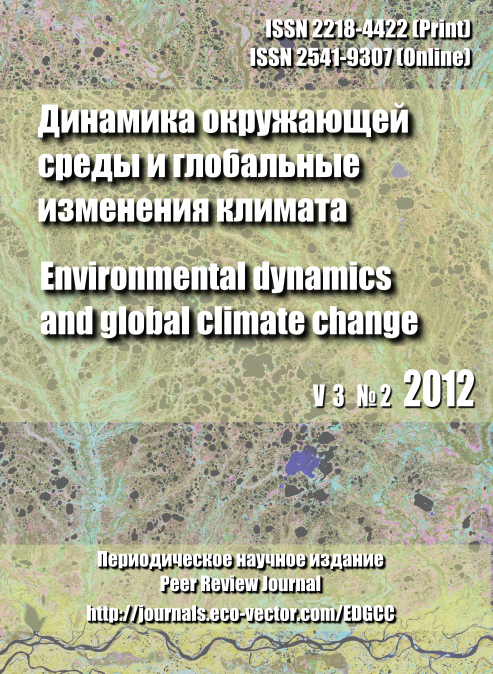Vol 3, No 2 (2012)
- Year: 2012
- Published: 15.08.2012
- Articles: 3
- URL: https://edgccjournal.org/EDGCC/issue/view/385
Articles
The apology of reductionism (reductionism as ideological basis of mathematical modeling)
Abstract
 1-24
1-24


Values of methane emission from drainage ditches
Abstract
Methane fluxes were measured from ditches on peatlands drained for different purposes in two testing areas in European part of Russia. We used static chamber method and gas chromatography for CH4 analysis. In Moscow Oblast CH4 emissions were measured from ditches on milled peat extraction area and on agricultural drainage area (used for haying) during 2005-2011. Ditch spacing for both sites is 40 m, width on water level – 1.5-2 m. Averaged (median) methane flux for summer period was 28.5 and 12.5 mgС-CH4∙m–2∙h–1, respectively, at these sites. Averaged (median) methane flux for summer period was 28.5 and 12.5 mgС-CH4∙m–2∙h–1 for these sites consequently. In 2009-2011 methane fluxes were also measured from the ditch on forest drainage area, upstream and downstream the dam built for mire restoration. Simple average CH4 emission rate was much higher at tail-bay point with flowing water as compared with back point upstream the dam with stagnant water – 14.4 and 2.4 mgС-CH4∙m–2∙h–1, consequently. We assume water flow rate supports water degassing and increase of CH4 emission from ditches. In Tver Oblast methane flux was measured in 2010 from ditches on forested bog and on forested fen, both drained for forestry with ditch spacing approx. 100 m, and ditch width on water level – 1-1.5 m. Flux observed at first nutrient-poor site was much lower – 0.31 mgС-CH4∙m–2∙h–1, as compared with nutrient-rich one – 3.88 mgС-CH4∙m–2∙h–1. Using methane emission rates from ditches and fractional area of ditches we calculate emission factors from drained peatlands. The results showed rather high values which need to be considered while assessing GHG emissions from drained peatlands.
 1-10
1-10


The methodology for estimation of scientific activity in UNESCO department of Yugra State University
Abstract
 1-16
1-16











